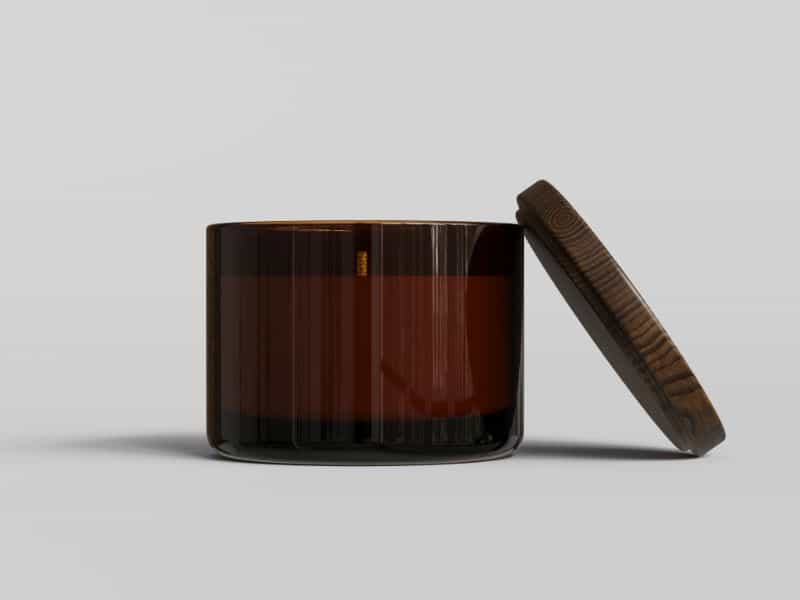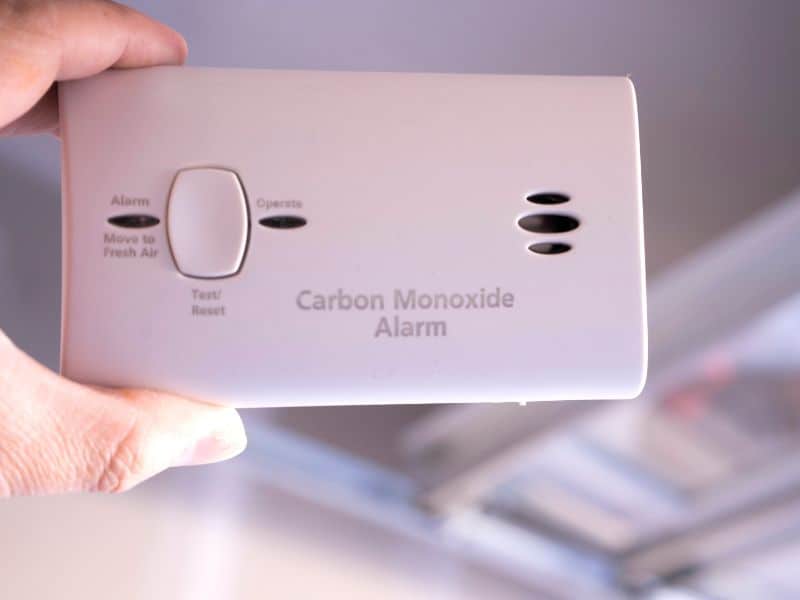Candles are more than just decorative items; they are mood-setters and sources of delightful fragrances. However, as the heat of summer rolls in, one question that often crosses our minds is, “Will my candles melt if left in my hot car?” We are going to take a look at that and see what you can do to avoid it. Let’s get started.
Candles will absolutely melt in a hot car due to temperatures that surpass the melting point of wax, and it can happen quickly. Factors like wax type, car interior color, and candle packaging can influence how quickly your candles will succumb to the heat.
In this comprehensive guide, we’ll delve into the science behind melting candles, explore the temperature dynamics within a car, and reveal how different types of candles and their packaging can influence the melting process.
Additionally, we’ll provide practical tips on how to protect your candles from excessive heat and share creative solutions if your candles do end up melting.
So, if you’ve ever wondered about the fate of candles left in a hot car, read on for a detailed examination of this intriguing topic.
The Science Behind Candle Melting
Candles, those simple yet enchanting sources of light and scent, undergo an intriguing transformation when exposed to heat. The scientific principle that governs this process is known as the “melting point,” defined as the temperature at which a solid will start turning into a liquid. When it comes to candles, understanding their melting point is key, particularly when considering leaving them in environments prone to extreme heat—like your car.
When you see the temperatures at which candle wax melts it is not surprising to learn that a candle can absolutely melt inside a car on a summer day.
Candle wax typically begins to melt between 99-145 °F, though the exact melting point varies depending on the type of wax. For instance, paraffin wax melts between 99-130 °F, soy wax around 120 °F, and beeswax at the higher end around 145 °F.
Candles are typically made from different types of wax, each with its own unique melting point. Paraffin wax, one of the most common types used in candle-making, has a melting point that ranges between 99-154 °F, depending on whether it’s a low or high melting point variant. Soy wax, another popular choice, generally melts at around 120 °F. At the higher end of the spectrum, beeswax candles hold their form longer, with a melting point of about 145 °F.
How Hot Can It Get in Your Car?
Now that we’ve established the melting points of various candle waxes, let’s focus on the conditions inside your car.
The temperature inside a vehicle can rise significantly during the summer, sometimes reaching a staggering 130-170 °F when the external temperature is around 80-100 °F.
A multitude of factors influence the temperature inside your car. These include the outside temperature, exposure to direct sunlight, whether your car is parked in the shade or under the sun, the color and material of the car’s interior, and whether the windows are tinted or not.
Interestingly, even whether the windows are cracked open or entirely closed has minimal effect on the internal temperature, contrary to what many believe.
How Long Does It Take for a Candle to Melt in a Hot Car?
So, how long would a candle last in such conditions? It turns out that the time it takes for a candle to melt in a hot car depends on several factors: the type of wax, the specific temperature inside the car, and the size and form of the candle.
Given the high temperatures inside a vehicle, a paraffin wax candle could start melting within as little as 25 minutes. Beeswax candles, with their higher melting point, may hold up a bit longer but are not immune to the heat. The size and form of the candle also matter—a small votive candle will melt much quicker than a larger pillar candle.
Another factor to consider is the packaging. If your candle is wrapped in plastic, the type of plastic used could influence the melting process. Some plastics can withstand high heat, while others might begin to melt, potentially accelerating the melting of the candle. Conversely, a cardboard box might provide some insulation, slowing down the melting process.
As we delve deeper into this topic, remember that prevention is the best strategy. If possible, avoid leaving your candles in your car, especially during the hot summer months.
Protecting Your Candles from the Heat
As the saying goes, prevention is better than cure. The same applies to protecting your candles from melting in the heat. While it’s ideal to avoid leaving your candles in a hot car, sometimes circumstances might not allow for it. Fortunately, there are a few strategies that can help.
Firstly, consider using additives. Certain additives, such as Ultraviolet Light Absorbers (UVLA’s), can help reduce the impact of the sun’s rays on your candles, acting like a sunscreen for your candles. Another additive, stearic acid, can increase the melting point of some waxes, providing an extra line of defense against the heat.
There’s also Micro 180, an additive known for increasing the firmness of the candle, which could be particularly beneficial during hot summer days. However, remember that additives can affect the color, scent throw, and burning properties of your candle, so use them judiciously.
Best Practices for Storing Candles in Hot Weather
Storing candles properly can significantly reduce the risk of them melting. When faced with hot weather or a warm car interior, consider packaging your candles in materials that do not absorb heat.
A combination of kitchen-grade plastic wrap and a cardboard box can provide some insulation, helping to keep the candle cool and protect it from melting.
If possible, try to keep your candles out of direct sunlight and away from harsh light. Store them in a cool place or in an air-tight container. This not only helps to prevent melting but can also prolong the life and quality of your candles.
Candle Types and Their Resistance to Heat
Not all candles are created equal, especially when it comes to their resistance to heat. The form of the candle can greatly influence how quickly it melts. For instance, small votive candles or tealights, due to their size, tend to melt faster than larger pillar candles.
Pillar candles, due to their larger size and volume, might take a bit longer to melt completely. However, keep in mind that the outer wax of a pillar candle can still soften and deform in high heat.
In conclusion, while all candles are susceptible to heat, with careful selection, proper packaging, and mindful storage, you can significantly reduce the risk of your candles melting—even in a hot car. However, the best practice is to remove candles from your car as soon as possible to avoid the risk altogether.
The Impact of Car Interior Colors on Candle Melting
Color does not only affect aesthetics, but it can also impact the rate at which your candles melt in your car. This is due to the fact that different colors absorb and reflect light (and therefore heat) to varying degrees.
Dark-colored interiors, such as black or brown, absorb more light and heat compared to lighter colors. This absorption can significantly raise the temperature inside your car, thereby hastening the melting process for any candles left inside. On the other hand, lighter-colored interiors, like beige or grey, reflect more light and heat, which can help to keep the interior slightly cooler.
While the difference might not be drastic, it’s an additional factor to consider when assessing how long your candles can withstand being left in your car.
Creative Solutions for Melting Candles
Despite our best efforts, sometimes candles do end up melting. While it might seem like a mess, there are several creative and practical solutions you can consider.
For one, you can use the melted wax to create new candles. With a new wick and a heat-resistant container, you can give the melted wax a new life. This is an eco-friendly and cost-effective solution, allowing you to get the most out of your candles.
Alternatively, if the candle melts in your car, you could use it as a makeshift air freshener. The heat that caused the candle to melt will also cause it to release its scent, filling your car with a pleasant aroma.
Finally, you could also use the melted wax for other DIY projects. For example, you could use it to wax thread for crafting, or even use it as a sealant in certain applications.
In the end, while no one wishes for their candles to melt prematurely, it doesn’t have to be a total loss. With a bit of creativity, you can find new ways to repurpose and make use of melted candles.
Frequently Asked Questions
Several factors influence the temperature inside a car, including the outside temperature, whether the car is in the sun or shade, the color of the car’s interior, and whether the windows are tinted or covered.
The time it takes for a candle to melt in a hot car depends on the type of wax, the size and shape of the candle, and the temperature inside the car. It can range from 25 minutes to 2 hours.
The packaging can act as an insulator, slowing the rate of melting. Certain materials, like cardboard, can help keep candles cool, while others, like thin plastic or wax paper, may melt or add to the mess.
Yes, you can reduce the risk by using additives, choosing high melting point waxes, storing them in protective packaging, and avoiding leaving them in the car for extended periods during hot weather.
Store candles in a cool, dry place away from direct sunlight. If they must be in a car, keep them in an insulated bag or box, and try not to leave them for long periods.
Yes, darker interior colors absorb more heat and can speed up the melting process, while lighter colors reflect heat and can slow it down.
Conclusion
In conclusion, understanding the science behind candle melting, the factors that influence car temperatures, and the different types of candle wax are vital in preventing your candles from turning into a melted mess in your car.
By being mindful of storage practices, considering the type and packaging of your candles, and using innovative solutions when the unavoidable does occur, you can navigate through the heat without losing your cherished candles.
Remember, every candle reacts differently to heat, and your vigilance in protecting them from extreme temperatures will go a long way. Whether you’re a candle maker or an enthusiast, employing these strategies will ensure your candles stay intact and continue to bring warmth, comfort, and delightful fragrance to your life.






